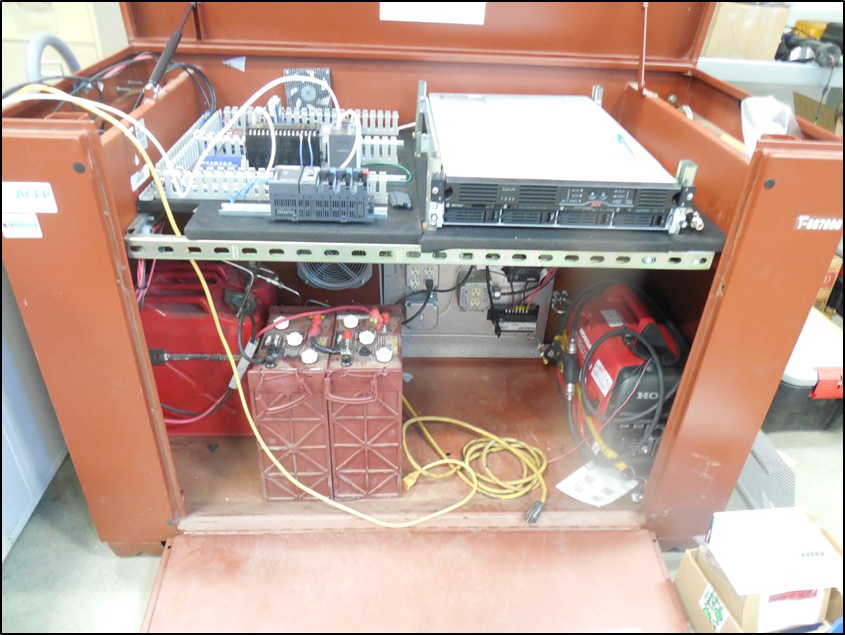ACEP at Work: VDOS Project Update

Project Description:
The Video Debris Observation System (VDOS) consists of the design, construction and testing of a remote video observation system designed to detect river debris with the goal of protecting hydrokinetic turbines.
The goal of the VDOS project is to capture images of high spatial and temporal resolution from an on-shore as well as an on-barge system in order to develop statistical models for debris occurrence (e.g. debris size and frequency distributions). In addition, the barge-mounted system will supply detailed documentation of interactions between debris and debris mitigation technologies.
Progress Update:
The current VDOS consists of an on-shore base station and a vessel mounted camera and communication system (vessel mounted system to be deployed Summer 2015). The onshore system consists of a high resolution camera, a network attached storage system, a web relay for system monitoring, and a wireless router for communication between the shore and vessel based system. Data is duplicated to a RAID array to minimize loss in case of system failure.
This year saw the addition of an automated power system to the VDOS. The new power system eliminates the need to manually start a generator to charge the system’s battery bank and considerably increases the resiliency and portability of the system. The automated power system was enabled by the use of a programmable logic controller (PLC) which monitors battery voltage. If the PLC senses low battery voltage, an auto start generator is engaged to charge the batteries. When the battery bank is fully charged, the PLC shuts the generator down, and switches to monitoring battery voltage. The PLC and auto-start generator allow the system to run for extended periods of time in the field without the need of constant user intervention.
The second generation VDOS was successfully deployed at the Tanana River Test Site for a portion of the 2014 field season. The system collected high quality photos that will be used to analyze debris flow and frequency. The ultimate goal of the VDOS is to collect and map debris data to help determine the best river or ocean locations to install hydrokinetic energy generators. The VDOS design and packaging allows for the system to be transported to remote projects sites and installed easily without the need for external power.
Future work on the VDOS will include the installation of the on-vessel camera in summer 2015. The on-vessel camera will capture close up photos of the hydrokinetic turbine test platform and AHERC’s debris diversion system and send them wirelessly to the onshore system for storage. The use of both an onshore and on-vessel systems will provide a large amount of quality data to accurately understand debris and its effects on in river infrastructure.
Project Lead: Marc Mueller-Stoffels, mmuellerstoffels@alaska.edu
Project Engineer: Nicholas Konefal
Project Funding: Alaska Energy Authority
VDOS shore system sits inside of ACEP’s Energy Technology Facility preparing to be sent to AHERC’s Tanana River Test Site. Photo courtesy N. Konefal, ACEP/UAF.



